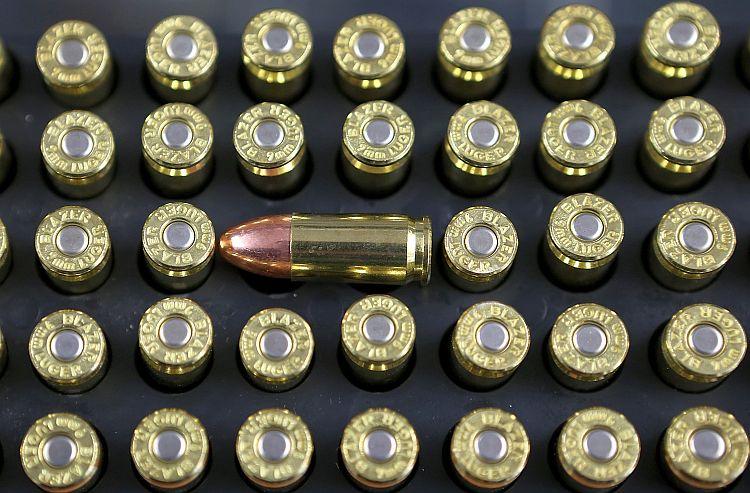Fearing the disruption of gun exports, the National Rifle Association vociferously opposed the Arms Trade Treaty that was approved on April 2 by the UN General Assembly.
The NRA always fights gun-related legislation because it fears a “slippery slope” toward confiscation. But its cause for concern in this case—the treaty’s non-binding call for national record-keeping, which is actually far less detailed than what is already required by existing U.S. laws—is so far-fetched as to be laughable.
The joke, though, is not just on the NRA. While the treaty doesn’t do anything to affect American gun owners, it’s so weak that it doesn’t seem to affect anybody at all.
The Arms Trade Treaty will place not a single new restriction on the leading arms exporters to developing countries, and in particular to the unelected governments who buy most of the weapons and cause most of the wars. Year after year, the United States wins the dubious distinction, under this president as under the previous five, of being number-one in arming developing countries and dictators. It uses these sales and gifts of weapons to maintain the network of “friendly” regimes that provide bases, intelligence, and commercial access, all in pursuit of what the Pentagon calls U.S. global “primacy.”
The treaty contains only four restrictions, two of which simply affirm existing UN rules: arms embargoes of specific countries, and the “illicit arms” protocol that requires governmental approval for all arms exports. The third restriction bars a government from transferring weapons if it has “knowledge at the time” that the weapons will be used to commit genocide, war crimes, or “grave breaches” of human rights. It is nearly impossible to imagine an exporting government being unable to deny having such knowledge.
The fourth restriction is an indefinable—and so unenforceable—ban on transferring weapons if there is an “over-riding risk” that the weapons “could be used to commit or facilitate a serious violation” of human rights. And guess who gets to decide if there is an overriding risk? The selling country itself. And of course the treaty ignores arms transfers by covert agencies like the CIA, which are the most likely to be diverted to unintended uses.
How did we end up here, with a treaty that doesn’t really do anything but generate reports? The blame for this lame treaty falls as much on the international human rights movement as on self-interested governments.
Polite Dictators
U.S. advocacy groups started developing this treaty 20 years ago because they wanted to reduce the devastation of civil wars in developing nations. These civil wars, like those today in the Congo, Somalia, and Afghanistan, cause millions of deaths every decade. Most deaths are not from combat itself, but from the disease and starvation that result when refugees flee from their homes and means of support. The American groups and a bipartisan congressional coalition led by the late Senator Mark Hatfield and former Congresswoman Cynthia McKinney drafted a “Code of Conduct” for governments to be eligible for U.S. arms sales.
The original Code of Conduct included a ban on selling arms to dictators. A version written by a coalition of Nobel Peace Prize winners led by former Costa Rican president Oscar Arias puts this more elegantly: Arms could be sold only to a country that “allows its citizens to choose their representatives through free and fairly-contested periodic elections that feature secret balloting [and] permits its citizens to express their political views through the freedom to speak.”
The Code faltered in the late 1990s after both houses of Congress rejected it in floor votes. Amnesty International revived it by working with British Prime Minister Tony Blair on a European Union version that focused not on how a government had taken power, but on what it did with its weapons. The EU Code replaced the ban on arming dictators with a call for exporters to weigh the “risk that the weapons could be used for international repression.” The definition of repression focused on violent acts, and excluded any consideration of dictatorship. This is when the Code was neutered, leading to the UN treaty.
Why did Amnesty International go this route? The human rights movement got its start in the 1970s—and made a huge impact—by rejecting claims of national sovereignty and criticizing governments, elected or not, for torturing and killing dissidents. But it was then caught in a human rights trap laid by polite dictators, who simply learned less violent ways to crush dissent. Groups like Amnesty International don’t classify dictatorship itself as an abuse of a human right (i.e. the right to choose one’s government), so they can support a ban on arms transfers only when a dictatorship is at some moment violently repressing its people.
But to adapt one of the NRA’s slogans, arms don’t repress people—dictators repress people. If you let the United States arm dictators when their rule is secure, don’t be surprised when the dictators use the arms when their rule is challenged.
Looking at Amnesty International’s website after the treaty was approved, one saw an unfortunate paraphrase of the original Code’s call, “No Arms for Dictators.” Now it reads “No Arms for Atrocities.” Too bad you can’t tell in advance who is going to commit an atrocity, the way you can tell who is a dictator.
Caleb Stewart Rossiter is the director of the American Exceptionalism Media Project and an associate fellow at the Institute for Policy Studies. Courtesy of Foreign Policy in Focus (fpif.org).
